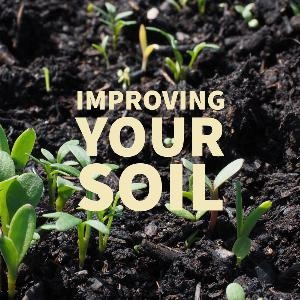Lovely black loamy soil doesn’t just happen- you
make
it happen by what you add to your soil. In our area, the most common problems are a soil that compacts and turns hard when watered- this is most likely a clay soil. A soil that remains soft and drains well, but dries out very fast is probably sandy soil. Or you may have a problem with alkaline soil. Alkali in the soil makes it hard for plants to grow and thrive, and sometimes will even kill the plant. Fortunately, there are remedies for these situations. The addition of organic matter will improve both clay and sandy soil. Organic material means peat or bark compost, Like Nutri-Mulch, or old hay, leaves, old grass clippings, old potting soil, old manure or composted manure. Any of these organic materials are beneficial to your soil, but adding organic material that will not bring weed seeds to your soil is going to save you a great deal of work later on. Mulch or compost that is purchased at a garden center is free of weed seeds. Spread the organic material over the area one to four inches thick and work it in thoroughly with a spade or tiller. Spreading the material more than four inches thick makes it hard to work with. To reduce the alkalinity of your soil, add Hi-Yield Soil Sulfur with the mulch or compost and work it in. The effect of alkaline soil can be seen in yellowing plants that don’t seem to thrive or respond much to fertilizers. Another great soil amendment that is often overlooked is iron. Alkaline soil binds up certain essential nutrients, especially iron and manganese, and makes them unavailable to the plant. The addition of Hi-Yield Iron or Ironite helps reduce this deficiency, even help to break down the molecular bonds the alkaline soil has created and allows more nutrients to be made available to the plants. The addition of iron promotes a deep greening of whatever you plant. The very best time to improve your soil is in the fall, but spring is a great time as well. Additions can be made after you plant, too, as long as you are careful not to injure the root system of your plants.
Let's talk for a minute about improving your soil. . .




